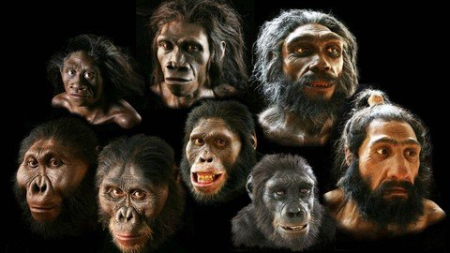
MP4 | Video: h264, 1280x720 | Audio: AAC, 44.1 KHzLanguage: English | Size: 528 MB | Duration: 56m
Evolutionary Relationship of Hominidae.
What you'll learn
You will learn Phylogenetic Tree analysis of animals of Hominidae Family using Biopython.
You will learn to Calculate Similarity Score of Hominidae Family using Biopython.
You will learn to Analysis of Evolutionary Relationship .
You will learn to perform Multiple Sequence Alignment with Clustal Omega.
Requirements
Basic Knowledge Taxonomy Levels and diversity is required.
Description
Hominidae, in zoology, one of the two living families of the ape superfamily Hominoidea, the other being the Hylobatidae (gibbons). Hominidae includes the great apes—that is, the orangutans (genus Pongo), the gorillas (Gorilla), and the chimpanzees and bonobos (Pan)—as well as human beings (Homo).
Hominidae has been a subject of much debate among taxonomists. Formerly, humans alone (with their extinct forebears) were placed in Hominidae, and the great apes were placed in a different family, Pongidae. However, morphological and molecular studies now indicate that humans are closely related to chimpanzees, while gorillas are more distant and orangutans more distant still. Since classification schemes aim to depict relationships, it is logical to consider humans and great apes as hominids—that is, members of the same zoological family, Hominidae.
Cytochrome c is one of the mitochondrial proteins that is released into the cytosol when the cell is activated by an apoptotic stimulus.
In the cytosol, cytochrome c engages the apoptotic protease activating factor-1 (APAF1), and forms the apoptosome, which activates caspase-9.
The release of cytochrome c has been suggested to occur in two phases: mobilisation from the mitochondrial intermembrane space and translocation through the outer mitochondrial membrane.
The mechanisms of cytochrome c release are controversial. Whether the permeabilisation of the outer or the inner membrane is responsible for the downstream events is one of the debated topics. Most evidence supports a model in which the outer membrane is permeabilised without inner membrane events.
The release of cytochrome c and cytochrome-c-mediated apoptosis are controlled by multiple layers of regulation, with the most prominent players being members of the B-cell lymphoma protein-2 (BCL2) family.
Multiple sequence alignment (MSA) is a tool used to identify the evolutionary relationships and common patterns between genes. Precisely it refers to the sequence alignment of three or more biological sequences, usually DNA, RNA or protein. Alignments are generated and analysed with computational algorithms.
Clustal Omega is a multiple sequence alignment program for aligning three or more sequences together in a computationally efficient and accurate manner. It produces biologically meaningful multiple sequence alignments of divergent sequences. Evolutionary relationships can be seen via viewing Cladograms or Phylograms.
A phylogenetic tree, also known as a phylogeny, is a diagram that depicts the lines of evolutionary descent of different species, organisms, or genes from a common ancestor.
Pairwise Sequence Alignment is used to identify regions of similarity that may indicate functional, structural and/or evolutionary relationships between two biological sequences (protein or nucleic acid).
The Biopython project is an open-source collection of non-commercial Python tools for computational biology and bioinformatics, created by an international association of developers.[1][3][4] It contains classes to represent biological sequences and sequence annotations, and it is able to read and write to a variety of file formats. It also allows for a programmatic means of accessing online databases of biological information, such as those at NCBI. Separate modules extend Biopython's capabilities to sequence alignment, protein structure, population genetics, phylogenetics, sequence motifs, and machine learning. Biopython is one of a number of Bio* projects designed to reduce code duplication in computational biology.
Who this course is for
bioinformatician , Biologist
HomePage:
Https://anonymz.com/https://www.udemy.com/course/phylogenetic-analysis-of-hominidae-with-biopython/DOWNLOAD
uploadgig.com
rapidgator.net
nitro.download

